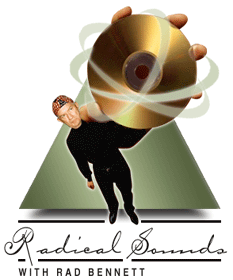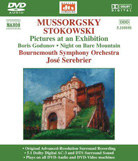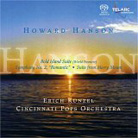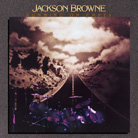 |
| January 1, 2006 Where Does High-Resolution Audio Stand?
There is nothing wrong with either the SACD or the DVD-A format. I would not be writing exclusively about them if there were. Their lack of popularity is due to bad marketing and promotion, poor distribution, and greed. Remember the early days of stereo, when there was double inventory for a year or so? There is still double inventory with SACD, for no reason other than bottom-line profit. The DualDisc camp has learned from this, putting out DualDisc releases in stores right beside regular CDs. You want the new Bruce Springsteen? It’s a DualDisc; you can play one side of the disc in your CD player, then the other side in your DVD player to access new and exciting features. If those who produce high-resolution recordings don’t believe in them enough to release them on a single format, why should the public accept the whole idea? Universal players that can play any disc format were a little late in arriving, but they’re now here in force. What’s the point in continuing to release two versions of the same recording? Sony started the whole thing off on the wrong foot by making almost all of its SACDs incompatible with all other formats. They could be played only on SACD players. The company finally starting making hybrid SACD/CDs, but a little too late. Well, no, it isn’t too late -- if every record label suddenly put out all of their releases in a single format -- hybrid SACD/CD -- everyone would win. People who play only CDs could play them, and those of us interested in climbing audio’s rung could have more titles to choose from. That’s not the way it is. Only three record labels seem totally committed to hybrid SACD: Channel Classics, Pentatone, and Praga. Almost all new releases from these labels are on hybrid multichannel SACDs that can be played on CD, SACD, and universal players. Moreover, Channel and Pentatone seem very proud of the fact. Other companies have committed in different ways. Telarc releases almost everything on SACD and CD, but some titles are still released only on CD. BMG has the wonderful RCA Living Stereo series -- three releases of ten titles each so far, and more no doubt coming -- but its regular releases are strictly hit or miss. The same goes for Universal, which puts out the Mercury Living Presence recordings as SACDs, and for BIS and ARTS. Many smaller labels produce outstanding SACDs from time to time as well. Sony, which started the whole thing, has released precious few SACDs since launching the DualDisc. Then there’s DVD-Audio. The Time Warner labels, including Warner-Elektra-Asylum, Nonesuch, and Teldec, are still into the format but release precious few titles, those usually as two-disc sets that include a DVD-A and a CD. AIX has gone the DualDisc route, with DVD-A and CD sides. Naxos, once fully committed to DVD-A, has moved more and more toward SACD, as has ARTS. My conclusion: DVD-A is almost dead but still kicking, however feebly. SACD is not dead at all, as more and more releases are added to the catalog. If Pentatone’s and Channel Classics’ promotion can make a dent in the market, other companies will follow and make SACD more of a household word by releasing entire catalogs on hybrid SACDs. In the meantime, the SACD/CD remains a healthy niche format that’s far from "dead." The promised blue-laser formats, Blu-ray and HD-DVD, are still in the works and unlikely to take over anytime soon. And although everyone is excited about these formats’ possibilities for high-definition video, few have said anything about the audio possibilities. Stay tuned -- and record producers, if you have opinions, write. We’ll print your letters. Meanwhile, this is the season when everyone lists the best recordings of the year. For this column, I say the same thing I did last year: Check the column archives and you’ll have your list. And here are three great-sounding recordings to start our 2006 list. Leopold Stokowski: Symphonic Transcriptions
Serebrier’s readings are dramatic, incisive, and colorful -- so much so that I think they outdo Stokowski’s own recordings. The orchestral sound has weight and presence, and conjures up that overused word, awesome. The frequency range is enormous. There is a lot of percussion here, and all of it, from the tiniest bell down to the weighty gong, can be heard with equal clarity. If you’re looking for a recording of a full orchestra to show off your new high-resolution surround-sound system, you couldn’t do better than Symphonic Transcriptions. This magnificent recording is also available in a dazzling hybrid multichannel SACD version. Hanson: Symphony No.2, "Romantic"; Fanfare
for the Signal Corps; Suite from Merry Mount; Bold Island Suite
Jackson Browne: Running On Empty
The new DVD-Audio multichannel mix seems to consider that, shifting the acoustic perspective from song to song. The opening and closing tracks, "Running On Empty" and "Stay," were recorded live, the instruments up front and the crowd all around the listener, who is clearly cast in the role of concertgoer. Other songs, such as "Rosie," seem to have been caught in more intimate circumstances, with Browne up front and the backup singers in the rear, much as in an intimate rehearsal. There is no live-action video, but two montages feature intimate photographs by Joel Bernstein. Overall, it is the high-resolution sound that most impresses me. Especially on the DVD, but on the newly mastered CD as well, are nuances and small touches I swear I never heard on the original CD mix. Overall, there’s a sense of liveness and presence that graces no other Jackson Browne disc. The singer-songwriter’s voice is revealed as flawed, and sounds much more successful for that human trait. Warner and Rhino seem to be shying away from the DualDisc in favor of packages that include a separate CD and DVD-A. Fine by me. If your CD is stolen from your vehicle, the DVD will no doubt be safe at home. One request: If Rhino and Warner are so intent on releasing certain artists’ complete works on DVD-A (e.g., Talking Heads, R.E.M.), why not give Jackson Browne that treatment? His isn’t that big an oeuvre, and would surely find a lot of customers. ...Rad Bennett
Ultra Audio is part of the SoundStage! Network. |
 Are SACD and DVD-Audio alive or
dead? "Dead," some would say, but I like to think that, while not mainstream
formats, each has found a secure niche market, much as vinyl has.
Are SACD and DVD-Audio alive or
dead? "Dead," some would say, but I like to think that, while not mainstream
formats, each has found a secure niche market, much as vinyl has. José Serebrier served as Leopold
Stokowski’s assistant conductor for five years and was hailed by his mentor as
"the greatest master of orchestral balance" -- quite an accolade from a
conductor noted for his own tireless quest for perfect orchestration. Stokowski constantly
experimented with orchestral seating plans, and touched up many a passage of
standard-repertory compositions. He was also an avid arranger and orchestrator, and this
disc presents the majority of his transcriptions of the music of Russian composers. Others
had tried to reorchestrate Mussorgsky’s music throughout the years, notably
Rimsky-Korsakov, who smoothed out the rough edges. But Stokowski recognized the alcoholic
Russian composer as a man far ahead of his time. When orchestrating Mussorgsky’s
music, Stokowski tried to preserve his wild visions, strange harmonies, and unique
instrumentation.
José Serebrier served as Leopold
Stokowski’s assistant conductor for five years and was hailed by his mentor as
"the greatest master of orchestral balance" -- quite an accolade from a
conductor noted for his own tireless quest for perfect orchestration. Stokowski constantly
experimented with orchestral seating plans, and touched up many a passage of
standard-repertory compositions. He was also an avid arranger and orchestrator, and this
disc presents the majority of his transcriptions of the music of Russian composers. Others
had tried to reorchestrate Mussorgsky’s music throughout the years, notably
Rimsky-Korsakov, who smoothed out the rough edges. But Stokowski recognized the alcoholic
Russian composer as a man far ahead of his time. When orchestrating Mussorgsky’s
music, Stokowski tried to preserve his wild visions, strange harmonies, and unique
instrumentation. Howard Hanson directed the Eastman
School of music for 40 years and conducted the Eastman-Rochester Orchestra, yet he found
time to write a prodigious amount of music. This SACD couples the relatively familiar
Symphony No.2 and Suite from Merry Mount with the seldom-heard Fanfare
for the Signal Corps and Bold Island Suite, the latter in its first recording.
I’d like to be able to tell you it is a newly discovered masterpiece, but it is a
competent, lesser work by a first-rate composer. Erich Kunzel has a good feeling for this
material. He paces it well, and the orchestral musicians’ playing is spot on.
It’s amazing to think that this entire program was recorded in a single day. The
sound is much like that on Dvorák’s Symphony No.9, "From the New World,"
covered in November’s column: rich, lush, and robust, with excellent detail. Telarc
seems to have licked the problem that plagued upper percussion from this orchestra’s
hall. Here, the cymbals in particular have remarkable presence while still sounding from
the back of the orchestra. Kunzel’s reading of Symphony No.2 is so good that many
might prefer it to Hanson’s own, available on a Mercury Living Presence three-channel
SACD.
Howard Hanson directed the Eastman
School of music for 40 years and conducted the Eastman-Rochester Orchestra, yet he found
time to write a prodigious amount of music. This SACD couples the relatively familiar
Symphony No.2 and Suite from Merry Mount with the seldom-heard Fanfare
for the Signal Corps and Bold Island Suite, the latter in its first recording.
I’d like to be able to tell you it is a newly discovered masterpiece, but it is a
competent, lesser work by a first-rate composer. Erich Kunzel has a good feeling for this
material. He paces it well, and the orchestral musicians’ playing is spot on.
It’s amazing to think that this entire program was recorded in a single day. The
sound is much like that on Dvorák’s Symphony No.9, "From the New World,"
covered in November’s column: rich, lush, and robust, with excellent detail. Telarc
seems to have licked the problem that plagued upper percussion from this orchestra’s
hall. Here, the cymbals in particular have remarkable presence while still sounding from
the back of the orchestra. Kunzel’s reading of Symphony No.2 is so good that many
might prefer it to Hanson’s own, available on a Mercury Living Presence three-channel
SACD. This 1977 album found Jackson
Browne at the top of his game, writing and singing songs about traveling musicians. He
covered all the bases: fatigue, drugs, women, and, most important, the exultation of
performing music to which crowds of fans responded in a positive way. In the end,
that’s what it’s all about for Browne -- the music. Running On Empty was
recorded on stage, backstage, in hotel rooms, on the tour bus -- just about anywhere the
songs were being played or rehearsed.
This 1977 album found Jackson
Browne at the top of his game, writing and singing songs about traveling musicians. He
covered all the bases: fatigue, drugs, women, and, most important, the exultation of
performing music to which crowds of fans responded in a positive way. In the end,
that’s what it’s all about for Browne -- the music. Running On Empty was
recorded on stage, backstage, in hotel rooms, on the tour bus -- just about anywhere the
songs were being played or rehearsed.